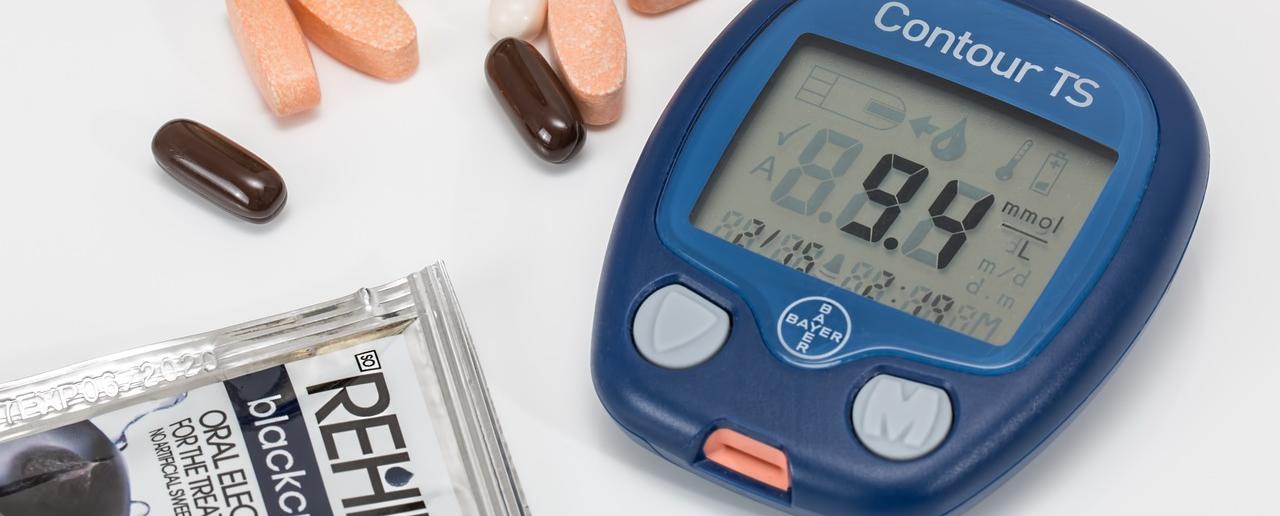Blood Sugar Level Charts: Normal, Prediabetes, and Diabetes Ranges.
Understanding blood glucose level ranges is a crucial aspect of managing diabetes.
Knowing the recommended blood sugar levels for different situations can help individuals with diabetes maintain better control over their condition.
However, it's essential to note that these values can vary from person to person, and it's crucial to discuss your specific targets with your healthcare team.
Here, we provide an overview of normal blood sugar ranges and ranges for adults and children with type 1 and type 2 diabetes.

Blood Sugar Level Charts: Article summary table
| Blood Sugar Level Type | Recommended Range | Conversion (mmol/L to mg/dL) | Normal Range (for individuals without diabetes) |
|---|---|---|---|
| Fasting Blood Sugar (before eating) | 80–130 mg/dL | 4.4–7.2 mmol/L | 99 mg/dL or below |
| 1–2 Hours After a Meal | Lower than 180 mg/dL | Lower than 10 mmol/L | 140 mg/dL or below |
| Blood Sugar Range for Children under 18 (Type 1 Diabetes) | Fasting: 90–130 mg/dL, Bedtime and overnight: 90–150 mg/dL | Convert to mmol/L where needed | Not applicable |
| Blood Sugar Range for Pregnant People with Type 1 Diabetes | Fasting: Lower than 95 mg/dL, 1 Hour After a Meal: 140 mg/dL or less, 2 Hours After a Meal: 120 mg/dL or less | Convert to mmol/L where needed | Not applicable |
| Blood Sugar Range for People with Gestational Diabetes | Fasting: Lower than 95 mg/dL, 1 Hour After a Meal: 140 mg/dL or less, 2 Hours After a Meal: 120 mg/dL or less | Convert to mmol/L where needed | Not applicable |
| A1C Levels (A1C) | Normal (<5.7%), Prediabetes (5.7%–6.5%), Diabetes (>6.5%) | Not applicable | Not applicable |
| Blood Sugar Range for Individuals Without Diabetes | Fasting: 99 mg/dL or below, 1–2 Hours After a Meal: 140 mg/dL or below | Convert to mmol/L where needed | Fasting: 5.5 mmol/L or below, 1–2 Hours After a Meal: 7.8 mmol/L or below |
This table provides an overview of recommended blood sugar ranges for various scenarios, along with conversions for mmol/L to mg/dL and normal ranges for individuals without diabetes.
It's essential to consult with a healthcare provider for personalized targets and diabetes management strategies.
Regular blood sugar monitoring is crucial for tracking your progress and ensuring the effectiveness of your treatment plan. If you need a blood monitoring systems see our article "Best blood glucose monitoring systems to 2024" to see what suits you best.
Recommended Blood Sugar Range for Adults with Type 1 and Type 2 Diabetes and Children with Type 2 Diabetes:
- Fasting (before eating): 80–130 mg/dL
- 1–2 hours after a meal: Lower than 180 mg/dL
These guidelines apply to adults with either type 1 or type 2 diabetes and children with type 2 diabetes.
Blood Sugar Range for Children under 18 Years with Type 1 Diabetes:

- Fasting (before eating): 90–130 mg/dL
- Bedtime and overnight: 90–150 mg/dL
Recommended Blood Sugar Range for Pregnant People with Type 1 Diabetes:
- Fasting (before eating): Lower than 95 mg/dL
- 1 hour after a meal: 140 mg/dL or less
- 2 hours after a meal: 120 mg/dL or less
Blood Sugar Range for People with Gestational Diabetes:
- Fasting (before eating): Lower than 95 mg/dL
- 1 hour after a meal: 140 mg/dL or less
- 2 hours after a meal: 120 mg/dL or less
Recommended Blood Sugar if You Don't Have Diabetes:
For individuals without diabetes, the standard blood sugar range is consistent, regardless of age or health condition. However, specific circumstances may lead to different targets. For instance,
if you have several risk factors for diabetes, a doctor might set a tighter blood sugar range. The standard range for people without diabetes is as follows:
- Fasting (before eating): 99 mg/dL or below
- 1–2 hours after a meal: 140 mg/dL or below
The Role of A1C
A1C is a measure of your average blood sugar over the past 3 months, and it involves a blood draw. When sugar enters your bloodstream, it binds to a protein called hemoglobin. Individuals with high blood sugar have a higher percentage of hemoglobin coated with sugar.
Your A1C result indicates the proportion of hemoglobin bound to sugar and provides insight into your blood sugar control.
- Standard ("normal") A1C: Less than 5.7%
- Prediabetes A1C: Between 5.7% and 6.5%
- Diabetes A1C: More than 6.5%
While it's generally recommended that people with any type of diabetes keep their A1C below 7 percent, personalized goals may apply depending on your unique factors.
What Are Normal Glucose Levels?
Normal glucose levels refer to blood sugar levels that are typically found in individuals without diabetes.
These levels can provide a benchmark for assessing your blood sugar control. For those without diabetes, fasting blood glucose levels are usually around 99 mg/dL or below, and blood sugar levels 1-2 hours after a meal are generally 140 mg/dL or lower.
Converting Between mmol/L and mg/dL
Blood sugar levels are measured in different units in various regions. In the
United States, blood sugar is often measured in milligrams per deciliter (mg/dL), while in many other countries, including the United Kingdom, millimoles per liter (mmol/L) are the standard. Converting between these units is relatively simple:
- To convert from mmol/L to mg/dL, you can multiply the value by 18. For example, 5.5 mmol/L is approximately equal to 99 mg/dL.
Is 6.6 Blood Sugar Normal?
A blood sugar level of 6.6 mmol/L (or approximately 118.8 mg/dL) may be considered high for fasting blood glucose in individuals without diabetes.
A fasting blood glucose level above 100 mg/dL (5.6 mmol/L) is generally regarded as elevated.
Is 4.8 Blood Sugar Normal?
A blood sugar level of 4.8 mmol/L (or approximately 86.4 mg/dL) is typically within the normal range for fasting blood glucose. In most standard blood sugar charts, a fasting blood glucose level between 70 and 100 mg/dL (3.9 to 5.6 mmol/L) is considered healthy.
What Is a Normal Blood Sugar Level 2 Hours After Eating?
Blood sugar levels 2 hours after eating, also known as postprandial blood glucose levels, should generally be lower than 180 mg/dL (or 10 mmol/L) for individuals with diabetes. For those without diabetes, a blood sugar level below 140 mg/dL (or 7.8 mmol/L) at this point is considered within the normal range.
Recommended Blood Glucose Levels
The National Institute for Clinical Excellence (NICE) offers recommended target blood glucose levels for different groups of people.
These guidelines provide a general understanding of what to aim for, but it's essential to work with your healthcare team to establish your individual targets.
NICE Recommended Target Blood Glucose Level Ranges
| Target Levels by Type | Upon Waking (mmol/L or mg/dL) | Before Meals (mmol/L or mg/dL) | At Least 90 Minutes After Meals (mmol/L or mg/dL) |
|---|---|---|---|
| Non-diabetic* | 4.0 to 5.9 (72 to 99) | Under 7.8 (Under 140) | |
| Type 2 Diabetes | 4 to 7 (72 to 126) | Under 8.5 (Under 153) | |
| Type 1 Diabetes | 5 to 7 (90 to 126) | 4 to 7 (72 to 126) | 5 to 9 (90 to 162) |
| Children with Type 1 Diabetes | 4 to 7 (72 to 126) | 4 to 7 (72 to 126) | 5 to 9 (90 to 162) |
*The non-diabetic figures are provided for information but are not part of NICE guidelines.
Normal and Diabetic Blood Sugar Ranges
For most healthy individuals, normal blood sugar levels typically range between:
- Fasting (when you haven't eaten): 4.0 to 5.4 (72 to 99)
- Up to 2 hours after eating: Up to 7.8 (140)
However, for people with diabetes, the blood sugar level targets may differ:
- Before meals: 4 to 7 (72 to 126)
- After meals: Under 9 (162) for people with type 1 diabetes and under 8.5 (153) for people with type 2 diabetes
Blood Sugar Levels in Diagnosing Diabetes
Diabetes and prediabetes can be diagnosed based on various plasma glucose tests. Here are the criteria for diagnosing these conditions:
Blood Sugar Levels in Diagnosing Diabetes
| Plasma Glucose Test | Normal (mmol/L or mg/dL) | Prediabetes (mmol/L or mg/dL) | Diabetes (mmol/L or mg/dL) |
|---|---|---|---|
| Random | Below 11.1 (Below 200) | N/A | 11.1 or more (200 or more) |
| Fasting | Below 5.5 (Below 100) | 5.5 to 6.9 (100 to 125) | 7.0 or more (126 or more) |
| 2-hour Post-Prandial | Below 7.8 (Below 140) | 7.8 to 11.0 (140 to 199) | 11.1 or more (200 or more) |
- Random Plasma Glucose Test: A random plasma glucose test can be performed at any time and is essential for diagnosing type 1 diabetes promptly.
- Fasting Plasma Glucose Test: This test is done after at least eight hours of fasting, usually in the morning. An individual with a fasting plasma glucose result between 5.5 to 6.9 (100 to 125) is at higher risk of developing type 2 diabetes, especially with other risk factors.
- Oral Glucose Tolerance Test (OGTT): The OGTT involves fasting and then drinking a sweet glucose solution. Blood samples are taken after two hours.
- HbA1c Test: While not a direct measurement of blood glucose levels, the HbA1c test indicates an individual's average blood glucose levels over the past 2 to 3 months. It's measured in mmol/mol and percentages.
Importance of Maintaining Good Blood Sugar Levels
Controlling blood glucose levels is crucial because sustained high sugar levels can lead to various diabetes-related complications, including:
- Kidney disease
- Nerve damage
- Retinal disease
- Heart disease
- Stroke
While these complications may seem concerning, the key takeaway is that managing your blood glucose levels effectively can significantly reduce the risk of these problems.
Even small improvements in control can make a substantial difference when maintained consistently.
Conclusion
Maintaining blood sugar within recommended ranges is essential for a healthy and fulfilling life. Consult your healthcare provider to establish personalized goals and strategies for achieving optimal blood sugar control.
Regular monitoring of your blood sugar levels is a vital aspect of diabetes management, allowing you to track your progress and ensure your treatment plan is effective.
If you have any risk factors for diabetes, you may need to get your blood sugar checked more often, even if you don't have diabetes.
If you need a blood monitoring systems see our article "Best blood glucose monitoring systems to 2024" to see what suits you best.
For tips on nutrition and health, keep exploring our content!
If you are interested in Diabetes Dinner Recipes Download This Free Ebook.
More resources about Diets:
- Ketogenic Diet
- Ketogenic Diet for Beginners: Your Step-by-Step Guide
- If you are interested in having a personalized plan and specific support for implementing your Ketogenic diet click here "Get Your Custom Keto Plan Now".
- ketogenic Diet for Weight Loss?
- Smoothie Diet
- If you are interested in having a personalized plan and specific support for implementing your Smoothie diet click here "Get Your Custom Plan Now".
- Low-Carb Diet